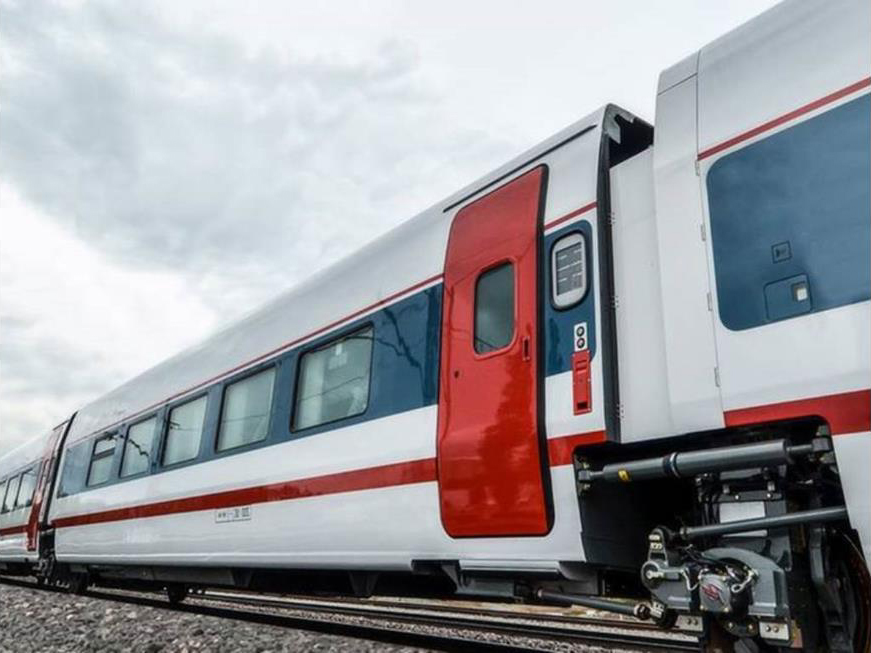D. 29.3. the European Railway Year opens under the auspices of the Portuguese Minister, and the following day the EU Transport Ministers meet to discuss new measures for European railways.
This is an obvious opportunity to include Denmark in the good company of countries that commit to developing the railways as an international green means of transport.
If the railways in Europe are going to increase shares in relation to aviation and road traffic, goals and deadlines must be set so that a long-term positive development can get “on track”. The capacity for passenger trains and freight trains must be increased, and a large master plan must make this possible. Among other things, Denmark has interest in the Hamburg area not becoming a blocker for many more trains from / to Denmark.
Back-on-Track, Denmark proposes the following:
- A Danish-German commission is set up to propose increases of the capacity for railways from resp. Jutland and Fehmarn, so that the capacity suits the need 2029 – 2050 and beyond. It takes time to develop railway capacity.
- The Danish Ministry of Transport to formulate an action plan that leads to more direct passenger day and night train connections to, respectively Oslo and the continent, both in the short term (2024) and in the longer run (from 2029). This plan can draw inspiration from the German proposal for TEE 2.0, where Denmark has a key position between Scandinavia and the Continent. Undoubtedly, agreements must be reached with countries in Europe that are ready to support a number of essential routes, in line with the cooperation launched by ministers from France, Germany, Austria and Switzerland in December 2020.
- Danish Ministry of Transport decides how passenger train rolling stock in the future will be owned in collaboration with the Nordic countries, so that Denmark can join a Nordic pool for international carriages for use in international night train travel by 2029.
Re. point 1, infrastructure south of the Fehmarnbelt
The railway over Fehmarn to Hamburg is being expanded / newly built in these years. It can still be achieved to improve the speed on the Danish side from Vordingborg to Nykøbing Fl. to 230 km/h and over the island of Lolland to 250 km/h. It is also possible to increase the speed on the German side from Puttgarden to Lübeck to 250 km/h. This allows us to get full value for the huge investments in the tunnel project.
The Jutland-Hamburg connection. In addition to the Tinglev-Padborg double track, the speed on the Danish line should first be increased to 200 km / h and eventually to 250 km / h. The platforms in Kolding should be extended as they are currently is a limitation for night trains. On the German side, it is of Danish interest that capacity and speed are increased. This may mean that in the long run there will be a new, double-track railway along the A7 with 250 km / h and with a stop in Neumünster. The bottleneck that Hamburg Hbh. already now constitute should be solved by new construction.
Re. point 2, launching international trains
In relation to Scandinavia, it is especially the railway service Copenhagen – Oslo that suffers. Already in 2024, it must be possible to establish 1-2 direct trains during the day and a direct night train between the two capitals.
For daytime trains to the south, it must be possible to establish 2-hour operation Copenhagen – Hamburg with DSB’s new locomotives and carriages from 2024, of which the two can be continued to, for example, Cologne and Berlin. This may require the use of an option to purchase more IC trolleys from the company Talgo, perhaps also with steering trolleys. When electrified to Aarhus, the international trains may. connected in Kolding.
Several night trains to the south. In Switzerland, Austria and the Netherlands, competent authorities are ready with support to launch night trains to Copenhagen, which can then become a hub for travelers to Sweden and Norway as well. Night trains can no doubt be launched in the direction of Zurich, Munich, Innsbruck and Vienna in 2024 or earlier. Funds from the night train agreement with the Swedes can very suitably be used to initiate a quick investigation of these possibilities.
Re. point 3, pool for international carriages
There are concrete considerations in both Sweden and Norway on how the running stock of the future for night trains should be provided. Both countries have a national authority that already owns carriages that are lent for subsidized rail operations. At European level, it is also being considered how night trains can be financed and lent from central pools, a report on this will be ready in September 2021.
If Denmark is to be better linked to foreign countries by night, it will be incredibly much easier if a Danish authority becomes co-owner of equipment, which can be used in international and Danish supported traffic. It requires i.a. a Danish clarification of how such equipment will be owned in the future.
Back-on-Track, Denmark is part of the European network of the same name. In Denmark, we consist of people with connections to traffic policy NGOs and of individuals. We have the facebook page “Bevar nattoget” and have borrowed room on this website.
